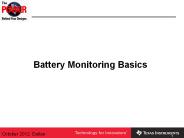Basics of FlyByWire - PowerPoint PPT Presentation
1 / 15
Title:
Basics of FlyByWire
Description:
This data is then used to calculate a suitable pitch for the aircraft. ... More agile military aircraft. Reduced maintenance. Increased performance and efficiency ... – PowerPoint PPT presentation
Number of Views:77
Avg rating:3.0/5.0
Title: Basics of FlyByWire
1
Basics of Fly-By-Wire
- Colum Holtam
- Giles Jackson
- Mike Harding
- Alan Wilson
- Justin Garman
2
Summary
- History evolution of control system
- Advantages of latest system
- Mechanical systems versus Mechatronic
- Flight control computer - system schematic
- Theoretical overview
- Developments and applications
3
FLY BY WIRE
- The Wright brothers made the first controlled
powered flight on 17th December 1903 - Control surfaces such as ailerons and elevators
- Later came Tailerons and vector thrust
- The old mechanical system for controlling
aircraft worked using pulleys and wires to move
the control surfaces the made the aircraft move
in the three axis (pitch, roll yaw) - As the demand for more performance from the
aircraft increased, the ability of the pilot
(i.e. physical strength) became insufficient
4
Advantages of fly-by-wire
- Carefree handling automatic suppression of
stalling and over-stressing - optimised handling
- agility
- increased performance
- handling of vectored thrust
- reduced drag
- auto pilots
- reduced maintenance
5
Mechanical vs Mechatronic
- Pitch/Roll Stick rudder pedals
- Steel wires and pushrods
- Hydraulic signals
- Artificial Feedback
- Small electronic unit mounted on the pilots
armrest - Electrical wires
- Electrical Impulses
- No force feedback Pitch rate/roll rate
- Analogue e.g Concorde, 1969
- Digital e.g. Airbus A310
- Airbus factor
6
Basic Block Diagram Showing System Schematic
Block Functionality for pitch
7
- A, b, c, d e are suitably located sensors for
providing pitot and static pressures and local
air flow measurements. - Used to derive the precise velocity vector of
the aircraft, that is both in magnitude and
direction. - This data is then used to calculate a suitable
pitch for the aircraft.
8
System Overview of Pitch Control
9
Fly By Wire Control System Overview
10
Applications of Fly-By-Wire
11
The Eurofighter
12
Eurofighter flight controls
13
The future of Fly-By-Wire
14
Summary of Fly-By-Wire
- Allows unstable aircraft to fly
- More reliable and safer than mechanical
controlled aircraft - More agile military aircraft
- Reduced maintenance
- Increased performance and efficiency
15
Thank you
- Questions?































